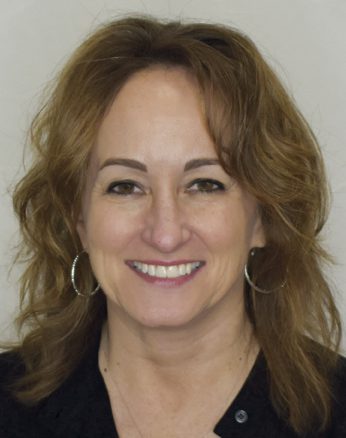LEADERSHIP
GAIN$HARING
A simple way to change your agency culture through a bonus program
By Diane T. Keil-Hipp, CPRM
Is it true? Can you really change the culture of your agency through a bonus program? It probably sounds too simple to really work. But I am living proof that it does, and over my twenty or so years of running a bonus program, I’ve learned a thing or two about the critical elements for success.
The bonus program I’m referring to is based on an intervention method called gainsharing.
I can attest that gainsharing is more than a financial bonus sharing program. It is a tool that has changed the culture of our organization from one that saw clients as a bother, that viewed management with suspicion, and that felt in the dark about the performance of the firm.
The benefits of designing and implementing a gainsharing program are … a culture that will be the envy of your competitors, a higher retention rate, and an informed workforce.
Today, the very same company has a culture where employees are goal-oriented, they care about our clients, they know the key indicators of the company’s performance, and they are focused on growth. Agency leadership and the structure of gainsharing drove these improvements, and what follows is a history of how we got there.
Where it started
As a young graduate student, I was introduced to gainsharing in one of my classes. It was a fairly straight-forward concept: A company sets goals for its employees to achieve, and if they achieve the goals, they “share” in the “gains” realized by the company (hence the term gainsharing). A financial calculation is made to help quantify those “gains,” and a percentage of the return is shared with the employees who participated.
Here’s a hypothetical example:
- Goal: We want to reduce our carbon footprint by not printing to paper.
- Saving: The company spends $10,000 less on paper, toner, maintenance of printer, IT department time.
- Return: The firm shares 50% of the gain with a team of 20 people; each person receives $250.
It sounds like a win-win! The change is impactful for the company, and the gainsharing bonus motivates the team to do what it takes to achieve the goal. It is deceptively simple, though, because the financial bonus portion of gainsharing is just a fraction of what a properly integrated gainsharing program encompasses.
Challenge and hurdles
Knight Insurance Group is an independent insurance agency in Northwest Ohio. The team I lead here is responsible for servicing the needs of our clients—developing strong relationships with them and ultimately retaining their business year after year. Retention, of course, is a key indicator of their performance.
When I started working at the agency, the concept of retention was foreign to too many of my team members. Clients often were viewed as “just more work,” and no one tracked our lost clients to know whether team members were doing their jobs well or poorly. Salespeople were writing new business, but because existing clients were leaving in droves, the agency wasn’t growing.
So what? The service team was not motivated to care about that.
My wheels were turning. Gainsharing was fresh in my mind, but there were several hurdles to overcome. The first hurdle appeared quickly: In order to implement gainsharing, I needed information. I needed data to determine our current state so we could set a target goal for improvement.
What was our retention rate? Who were our lost clients, and how much revenue were we losing? Were Sally’s clients leaving in greater numbers than Jane Doe’s? And why were they leaving? Was it because of something we could control—like dissatisfaction—or did they pass away or, in the case of commercial clients, sell their business?
We did not know any of these things, so the first order of business was to develop a procedure to gather all of this data so that we could determine a benchmark from which to measure change. This required the cooperation of that very team that viewed clients as “just more work.” Why in the world would they want to cooperate in this data-mining task? They were quite suspicious.
What I learned about suspicion is that it often comes from being left in the dark. Communication was the next hurdle to overcome. Team members deserved to know why they should work to collect the data. Along with communication follows trust. When people are deprived of information, they tend to distrust and often make up scenarios to fill in the gaps.
Sharing the concept of gainsharing even before the data could be analyzed was important. Continuing to communicate as information became known was critical.
Once the components of gainsharing were designed, the entire team met every month to review the previous month’s data and review the actual results against the goal. Continuous communication breeds trust. Trust didn’t develop overnight, but it did come about.
The final hurdle was the design of the actual bonus program. (It’s interesting that it was last, since that is the component most people think of when they think about gainsharing.) What were the elements? What percentage would be shared? How would we calculate it? We had to go through some creative number crunching to build something that never existed before, but actually, designing the formula was the easiest part.
Since being implemented, our gainsharing program has been tweaked and modified many times as I’ve learned about the activities that influence our retention. The formula is not static. As the agency’s goals change, gainsharing changes with it.
Today, the bonus program is made up of four elements:
- Reviews with clients (a target number to achieve)
- Retention
- Upselling
- Internet reviews (Google and Facebook).
These are elements that we believe drive retention—the ultimate goal. Today our retention goal is 95%, which means that 95% of our clients renewed their policies in the past year.
Hitting this target means that the new accounts written by the sales team actually help the agency grow; they’re not just replacing the lost clients.
Key takeaways
Over twenty years, I’ve learned that a successful gainsharing program requires these elements:
Leadership. Gainsharing worked at the agency because of persistence. I did not give up on the program when something did not go quite right. I was willing to tweak it, modify it, and add new elements. I also believed in sharing information and in sharing financial gains—two critical elements that are necessary for a successful gainsharing program.
Communication. Every single month, the entire team meets and reviews last month’s reports. Every member of the team knows exactly where we are throughout the year. Questions are asked and answered in a transparent way, and people have been treated fairly. When a situation arises that could be decided in multiple ways, I lean in favor of the team and make the decision that benefits their achievement of goals.
Bonus design. The bonus formula must be fair for both sides with quantitative goals that are either met or not. The sharing component must be a fair percentage. I chose 40%-50%. The bonus calculation must not feel mystical; it should be easy for anyone to calculate.
The benefits of designing and implementing a gainsharing program are worth restating: a culture that will be the envy of your competitors, a higher retention rate, and an informed workforce—all leading to a highly successful company. If your agency is seeking any of these benefits, consider creating and implementing a gainsharing program.
 The author
The author
Diane T. Keil-Hipp is chief operating officer at Knight Insurance Group, an independent insurance agency in Toledo, Ohio. She is also a doctoral student at Bowling Green State University, where she earned a master of organization development degree in 1998. Diane has served on various boards over the years, including Independent Insurance Agents of Ohio, Westfield Agents Association, Toledo Warehouse District Association, and BGSU Insurance Board.






